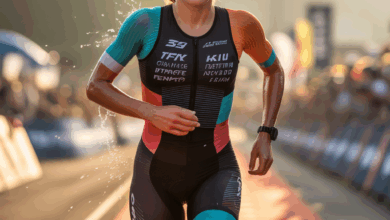Karen Crossfit Workout Tips And Tricks

Ever stood in front of a wall-ball target, heart racing, and wondered how some athletes fly through 150 reps while you feel stuck after the first 30? If the thought of “Karen” (the classic CrossFit benchmark) makes you nervous, you’re not alone. In this article you’ll find practical, coach-tested Karen CrossFit workout tips and tricks to improve efficiency, pacing, and recovery — whether you’re RX’ing the 20/14 lb ball or scaling the workout.
What is Karen and why it’s a true conditioning test
Karen is a benchmark WOD consisting of 150 wall-ball shots for time. It targets muscular endurance, cardio conditioning, and consistent technique under fatigue. Because it’s high-rep and repetitive, Karen exposes weaknesses in movement economy, breathing, and pacing more than many other workouts. Mastering Karen improves your metcon strategies and makes other high-volume workouts feel more manageable.
Fundamental technique tips before you start
Solid technique saves energy rep after rep. Focus on these movement fundamentals to make every wall-ball count:
- Dip and drive: Use a compact hip hinge and immediate drive through the hips instead of an exaggerated deep squat. This engages the larger posterior chain and reduces quad burnout.
- Consistent target focus: Pick a spot on the wall and maintain visual consistency — this helps rhythm and timing on the catch and release.
- Efficient catch: Catch the ball at chest height with a soft elbow bend; avoid boxing the ball out in front of you which wastes energy and shifts your center of gravity forward.
- Breath timing: Inhale on the dip, exhale on the release. Rhythmic breathing prevents the hiccups that lead to early fatigue.
Warm-up routine for a faster Karen
A targeted warm-up primes the shoulders, hips, and core while elevating heart rate without draining energy. Try this 8–10 minute warm-up:
- 2 minutes light row or bike
- 2 rounds: 10 PVC shoulder pass-throughs, 10 hip hinges, 10 air squats
- EMOM 4: Minute 1 – 6 light wall-balls (warm up with a lighter ball), Minute 2 – 8 kettlebell swings
- 2–3 practice wall-balls at working intensity (focus on rhythm, not fatigue)
Strategies to pace and partition Karen
How you break the 150 reps will make or break your time. Here are proven partitioning strategies used by competitive CrossFitters and coaches:
Singles vs. sets
Sprinting singles early will leave you gasping. Instead, choose sets that fit your strength endurance. Common partitions:
- 15-15-15-15-15-15-15-10 (eight sets) — good for steady athletes
- 30-20-20-20-20 (five sets) — works if you can hold 30 without collapsing
- 10 sets of 15 — psychologically manageable and helps maintain form
Rest strategy
Take short, planned rests — 5–15 seconds between sets — to maintain rhythm and avoid technical breakdown. A quick micro-rest (hands on knees, shake out forearms) is often better than letting breathing spike out of control.
Training variations and accessory work
To improve your Karen time, train both the movement and the systems behind it.
- EMOM wall-ball practice: 12 minutes EMOM alternating heavy and light sets (e.g., odd minutes 12 heavy reps, even minutes 10 light reps).
- Tempo squats and paused squats: Build leg endurance and better bottom position control.
- Push-press and thruster sequences: Improve shoulder and tricep endurance for better catches and throws.
- Metcon intervals: 4–6 rounds of 3–4 minutes high-intensity intervals (row + wall-balls) to improve lactic tolerance.
Mobility, recovery and injury prevention
Repetition-heavy workouts demand mobility and smart recovery. Focus on:
- Shoulder mobility drills — banded pull-aparts, wall slides
- Thoracic extension work to keep an upright chest during catches
- Quadriceps and hip flexor stretches to prevent anterior fatigue
- Active recovery sessions — light bike or swim + foam rolling
Nutrition and fueling for performance
What you eat before and after Karen matters. For a morning or midday attempt:
- Pre-workout (60–90 minutes): small carb-focused meal — banana, toast with nut butter, or oatmeal for steady energy.
- Hydration: sip water and include electrolytes if you sweat heavily.
- Post-workout: 20–30 g protein and some carbs to replenish glycogen and start recovery (yogurt with fruit, a protein shake and a piece of fruit).
For longer-term gains, pair this advice with more detailed plans in our nutrition guides.
Real-world examples: small changes, big results
Case 1: Emma cut her Karen time from 9:40 to 7:40 by switching from singles to planned 15-rep sets and practicing EMOM wall-balls twice a week. Case 2: Marcus hit a plateau because of collapsed catches; after four weeks of thoracic mobility and paused front squats, his wall-balls felt cleaner and he maintained pace to a new PR.
Common scaling options for beginners
If 150 RX wall-balls feel unmanageable, scale logically:
- Reduce reps (e.g., 100 or 120 reps)
- Use a lighter medicine ball (10–14 lb)
- Lower target height to maintain rhythm and confidence
- Partition into smaller sets with longer rests to build capacity
Scaling is not cheating — it’s programming to progress.
karen crossfit workout tips and tricks (Key takeaways)
Remember these core principles when approaching Karen: maintain efficient form, plan your partition and rest strategy, practice the movement under controlled conditions, fuel and recover properly, and address mobility limitations. Small, consistent changes in technique and programming produce big improvements.
Frequently Asked Questions
1. What weight and target height is Karen in CrossFit?
Standard Karen is 150 wall-ball shots using a 20 lb ball for men and 14 lb for women, thrown to a 10 ft (men) or 9 ft (women) target. Many gyms will scale the ball weight or target for athlete safety and development.
2. How should I break up the reps for best time?
Choose a partition that matches your endurance. If you can hold 20–30 reps cleanly, larger sets with brief rests work. If not, use sets of 10–15 to keep breathing and technique steady. Practice different partitions in training to find your most efficient strategy.
3. How often should I practice Karen or wall-ball volume?
Include wall-ball sessions 1–3 times per week depending on your goals. One focused practice session per week plus supplemental metcon and strength work (squats, presses) will yield steady gains without overuse.
Conclusion — Take on Karen smarter
When you apply these karen crossfit workout tips and tricks — better technique, smart partitioning, targeted accessory work, and proper fueling — Karen stops being an intimidation test and becomes a measurable way to track conditioning progress. Ready to improve your next Karen? Start with a focused warm-up, pick a partition plan, and practice wall-ball tempo twice a week. For more structure, check out our workout routines and explore deeper recovery strategies in our wellness tips section.
Want a personalized plan or help dialing in your set splits? Leave a comment or sign up for coaching — your next PR is one smart workout away.





